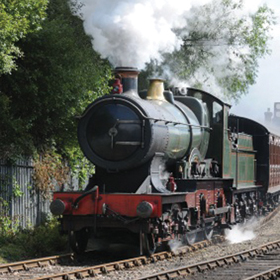
Contact Us For A FREE Security Survey






|
Search Alarms In Spain |

Security Articles
How safe is your home?
One of the top tips for giving your home the quick safe test is this:
Imagine you have locked yourself out of your home, all doors and windows were shut and you desperately need to get back in, where is the easiest point of entry?
Read more...
One of the top tips for giving your home the quick safe test is this:
Imagine you have locked yourself out of your home, all doors and windows were shut and you desperately need to get back in, where is the easiest point of entry?
Read more...
DAVE SAYERS - SAFEGUARD LOCKSMITH
ONE IS NOT ENOUGH TO COVER A WHOLE HOUSE AND SOMETIMES THEY ARE IGNORED EVEN THOUGH THEY COST PEANUTS!!


Worst house fire 'in a decade' caused by freezer
24 October 2012
A house fire described in September 2011 as ‘the worst house fire in the capital in over a decade’ was probably caused by a freezer, an inquest has heard.
The fire in Neasden last year tragically killed Bassam Kua’s wife and five of his children, when the blaze broke out in the early hours of Saturday 24 September.
Channel 4 news reported on Monday how Andrew Vaughan-Davies, a London Fire Brigade investigator told the inquest a degraded capacitor in the family’s freezer was the most likely cause of the fire.
He said how the London Fire Brigade had seen 191 fires in the past two years due to defective fridges, freezers and fridge-freezers.
Lint and other materials behind the unit would have caught fire easily, and the capacitor would have heated up to be “like molten lava”.
There were reports last year about a Beko fridge-freezer being present in the house, but this is not believed to be the model involved in the blaze.
While Mr Kua and his 17-year-old daughter Nur were able to escape, but his wife Muna Elmufatish and children Hanin, 14, Basma, 13, Amal, nine, Mustafa, five, and Yehya, two, died.
Post-mortem’s indicated that all six died from inhaling toxic smoke fumes.
"Blind panic"
Mr Kua and his wife were woken by a smoke detector, and both managed to escape before Muna returned into the house to find their children.
Mr Kua attempted to battle the abalaze freezer with a garden hose but quickly realised it was “useless”.
He returned into the house to look for the rest of his family, describing in a statement his “blind panic” as he failed to locate them.
“I went upstairs to try to find my family, but I couldn't. I think I repeated the process of running up and down and out of the house about four or five times."
His harrowing statement continued:
"I saw the fire brigade bringing out my son Mustafa, who was five years old. I saw them pushing down on his chest trying to save him. I told them the others were upstairs, and where were their ladders?
"I kept asking about Mustafa, and after about 10 minutes or so they said Mustafa was dead."
24 October 2012
A house fire described in September 2011 as ‘the worst house fire in the capital in over a decade’ was probably caused by a freezer, an inquest has heard.
The fire in Neasden last year tragically killed Bassam Kua’s wife and five of his children, when the blaze broke out in the early hours of Saturday 24 September.
Channel 4 news reported on Monday how Andrew Vaughan-Davies, a London Fire Brigade investigator told the inquest a degraded capacitor in the family’s freezer was the most likely cause of the fire.
He said how the London Fire Brigade had seen 191 fires in the past two years due to defective fridges, freezers and fridge-freezers.
Lint and other materials behind the unit would have caught fire easily, and the capacitor would have heated up to be “like molten lava”.
There were reports last year about a Beko fridge-freezer being present in the house, but this is not believed to be the model involved in the blaze.
While Mr Kua and his 17-year-old daughter Nur were able to escape, but his wife Muna Elmufatish and children Hanin, 14, Basma, 13, Amal, nine, Mustafa, five, and Yehya, two, died.
Post-mortem’s indicated that all six died from inhaling toxic smoke fumes.
"Blind panic"
Mr Kua and his wife were woken by a smoke detector, and both managed to escape before Muna returned into the house to find their children.
Mr Kua attempted to battle the abalaze freezer with a garden hose but quickly realised it was “useless”.
He returned into the house to look for the rest of his family, describing in a statement his “blind panic” as he failed to locate them.
“I went upstairs to try to find my family, but I couldn't. I think I repeated the process of running up and down and out of the house about four or five times."
His harrowing statement continued:
"I saw the fire brigade bringing out my son Mustafa, who was five years old. I saw them pushing down on his chest trying to save him. I told them the others were upstairs, and where were their ladders?
"I kept asking about Mustafa, and after about 10 minutes or so they said Mustafa was dead."
Security Articles

Site Map I Privacy and Cookies Policy I Terms Of Use I Disclaimers I Affiliate Disclosure I Advertise I Contact Us
Copyright © - AlarmsInSpain.com - All Rights Reserved.
Designed by
New detection and alarm system for historic railway centre
03 August 2011
A historical collection of railway memorabilia at the Didcot Railway Centre is being protected with the help of Kentec fire control panels.
Didcot Railway gets fire panels
The system includes conventional smoke and heat detectors from the Hochiki CDX range and a series of weatherproof connectors on the outside of the carriages.
03 August 2011
A historical collection of railway memorabilia at the Didcot Railway Centre is being protected with the help of Kentec fire control panels.
Didcot Railway gets fire panels
The system includes conventional smoke and heat detectors from the Hochiki CDX range and a series of weatherproof connectors on the outside of the carriages.

The museum holds Great Western Railway steam engines, coaches, wagons, engine sheds and memorabilia as well as a recreation of Brunel's broad gauge railway.
The panels are at the heart of a new fire safety system that has been designed and installed by Kingwood Safety Systems.
A spokesman said: “As well as its science, learning and railways training areas housed in two railway coaches, the centre has five carriages specifically for accommodating centre workers, each requiring round-the-clock automatic fire detection as a distinctly independent zone.”
With the purpose of allowing any of the carriages to be safely decoupled and relocated, a linked conventional twin wire fire alarm system has been installed with a Kentec four zone twin wire Sigma CP conventional fire alarm control panel in the 10 berth main carriage that connects to the other four carriages via separate zone connections.
The panels are at the heart of a new fire safety system that has been designed and installed by Kingwood Safety Systems.
A spokesman said: “As well as its science, learning and railways training areas housed in two railway coaches, the centre has five carriages specifically for accommodating centre workers, each requiring round-the-clock automatic fire detection as a distinctly independent zone.”
With the purpose of allowing any of the carriages to be safely decoupled and relocated, a linked conventional twin wire fire alarm system has been installed with a Kentec four zone twin wire Sigma CP conventional fire alarm control panel in the 10 berth main carriage that connects to the other four carriages via separate zone connections.
Features and Operating Processes of Integrated Security Systems
Business: Security • Published: April 29, 2014
Security systems are an integral part of building security at a large number of venues nowadays and are installed with the idea of making security more manageable and more thorough. A lot of the time the features might seem unnecessary but in the event of large security breaches they could be the difference between catching a perpetrator and letting them get free.
The specific features of integrated security systems depends on the needs of the customer as well as the technology available to the system provider. The most advanced providers who are working with clients with big security requirements such as prisons might provide security systems with the following features:
- Perimeter intruder detection
- CCTV and Digital Video Recording
- Intruder Alarms
- Panic/Affray Alarms
- Video Content Analysis
- Building Management Systems
- Electronic Locking
- Cell Call
- Fire Alarms
- Intercoms
- Public Address System
- Radio Paging
- Staff Safety Systems
- Guard Tour
These features are intended to be present in very high profile buildings and would not be present in the integrated security systems custom made for other buildings. However this gives you some idea as to how advanced security technology is nowadays and exactly how many features the operating system has to integrate in order to achieve results.
The main operating system behind integrated security systems is known as PSIM, or Physical Security Information Management. This is the virtual brain which controls the integrated security systems and which helps human operators to make decisions.
A PSIM platform has six main features which work together to improve the efficiency and standard of a security network:
Firstly, the PSIM platform collects data from all of the individual security features and collates them.
It then analyses the data, events and alarms in order to calculate situation priorities before presenting the information in a simple format for the user to understand and respond to efficiently.
The platform will then provide SOPs (Standard Operating Procedures) which are simple instructions based on best practices, and provides tools to resolve the situation.
The PSIM software will track all procedures and provide a report for the operator or system owner to analyse afterwards.
It provides an audit, tracing how the operator has interacted with the system.
Finally it provides information on any manual changes to the security systems and calculates reaction and response times for each event.
The technology behind integrated security systems is very advanced and requires a whole plethora of different processes being run at the same time to decide whether there is a threat present or not. With a bit of luck, technology such as PSIM will only be used in emergencies, leaving the security staff to analyse and evaluate threats for the majority of the time. Features such as cell call and intercoms are simple features which are not necessarily integral to the integrated security features, but are just as important in improve the security of establishments like prisons.
Integrated security systems have gone a long way to improving security in high-profile buildings like prisons and without them, these places would be much more dangerous.
Matt works for ISM, a world pioneer in Integrated Security systems and integrated security solutions. ISM are the UK's leading developer of integrated security management and, intercom and cell call systems. In his spare time he enjoys the finer things in life, including travelling and dining out.
Article Source: http://EzineArticles.com/?expert=Matt_Blaikie
Article Source: http://EzineArticles.com/8475976
Business: Security • Published: April 29, 2014
Security systems are an integral part of building security at a large number of venues nowadays and are installed with the idea of making security more manageable and more thorough. A lot of the time the features might seem unnecessary but in the event of large security breaches they could be the difference between catching a perpetrator and letting them get free.
The specific features of integrated security systems depends on the needs of the customer as well as the technology available to the system provider. The most advanced providers who are working with clients with big security requirements such as prisons might provide security systems with the following features:
- Perimeter intruder detection
- CCTV and Digital Video Recording
- Intruder Alarms
- Panic/Affray Alarms
- Video Content Analysis
- Building Management Systems
- Electronic Locking
- Cell Call
- Fire Alarms
- Intercoms
- Public Address System
- Radio Paging
- Staff Safety Systems
- Guard Tour
These features are intended to be present in very high profile buildings and would not be present in the integrated security systems custom made for other buildings. However this gives you some idea as to how advanced security technology is nowadays and exactly how many features the operating system has to integrate in order to achieve results.
The main operating system behind integrated security systems is known as PSIM, or Physical Security Information Management. This is the virtual brain which controls the integrated security systems and which helps human operators to make decisions.
A PSIM platform has six main features which work together to improve the efficiency and standard of a security network:
Firstly, the PSIM platform collects data from all of the individual security features and collates them.
It then analyses the data, events and alarms in order to calculate situation priorities before presenting the information in a simple format for the user to understand and respond to efficiently.
The platform will then provide SOPs (Standard Operating Procedures) which are simple instructions based on best practices, and provides tools to resolve the situation.
The PSIM software will track all procedures and provide a report for the operator or system owner to analyse afterwards.
It provides an audit, tracing how the operator has interacted with the system.
Finally it provides information on any manual changes to the security systems and calculates reaction and response times for each event.
The technology behind integrated security systems is very advanced and requires a whole plethora of different processes being run at the same time to decide whether there is a threat present or not. With a bit of luck, technology such as PSIM will only be used in emergencies, leaving the security staff to analyse and evaluate threats for the majority of the time. Features such as cell call and intercoms are simple features which are not necessarily integral to the integrated security features, but are just as important in improve the security of establishments like prisons.
Integrated security systems have gone a long way to improving security in high-profile buildings like prisons and without them, these places would be much more dangerous.
Matt works for ISM, a world pioneer in Integrated Security systems and integrated security solutions. ISM are the UK's leading developer of integrated security management and, intercom and cell call systems. In his spare time he enjoys the finer things in life, including travelling and dining out.
Article Source: http://EzineArticles.com/?expert=Matt_Blaikie
Article Source: http://EzineArticles.com/8475976
WHY SMOKE DETECTORS ARE SO IMPORTANT!














